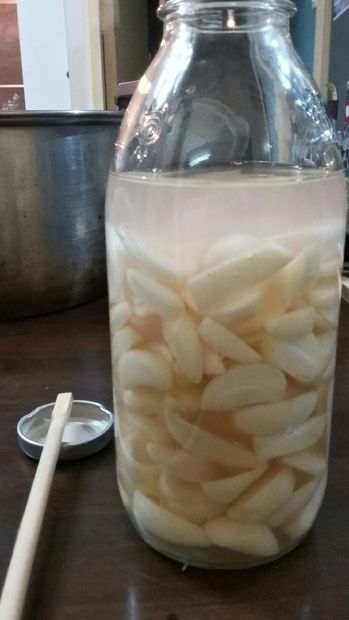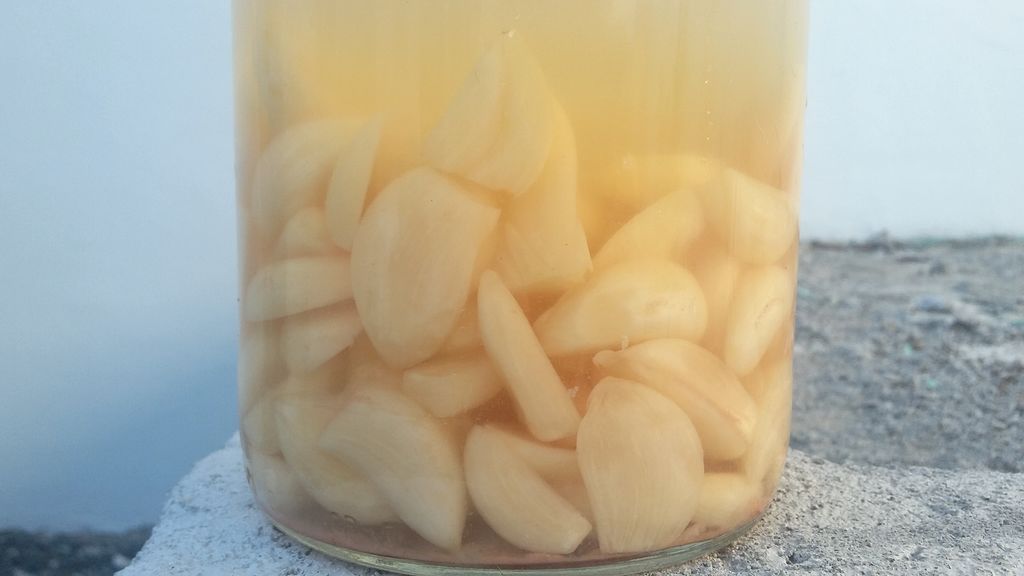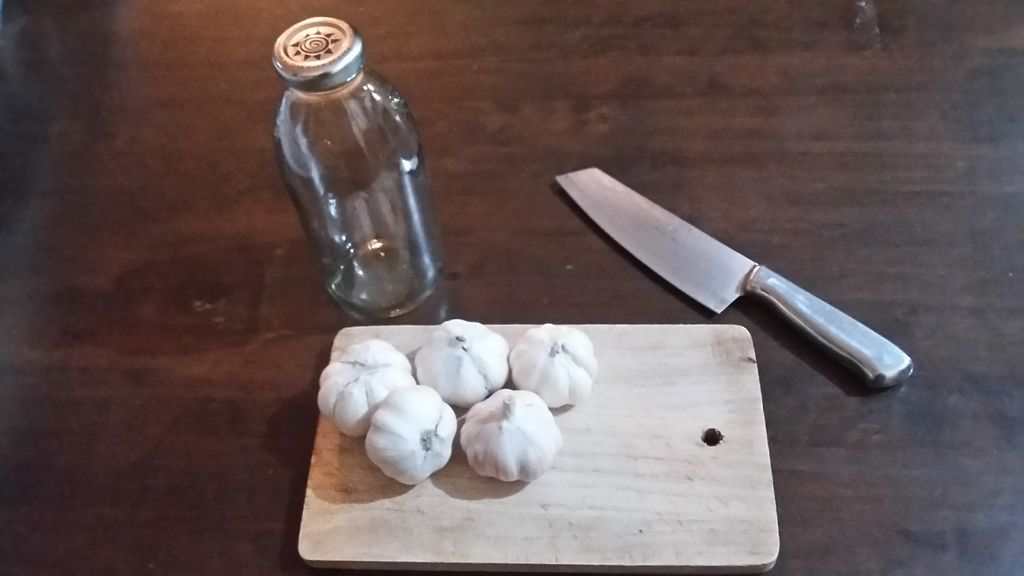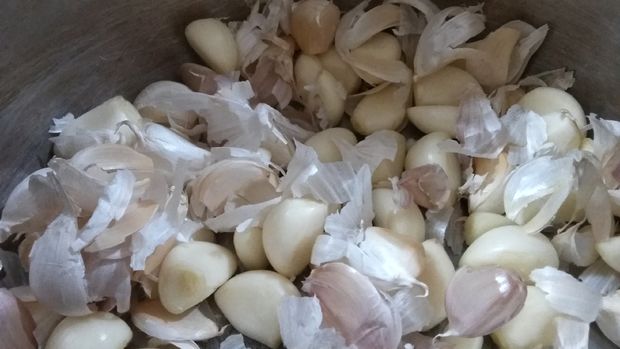Question ID: 4000-3761-0-1-2-4
Recipe Description
You don't need much. • garlic: I used 6 heads in all. Get enough to mostly fill your jar. • brine: Mix 4 cups of water with 4 1/2 tablespoons of coarse sea salt. It'll dissolve in time. There. I said you didn't need much!
Cut the stem ends off of each head of garlic. And now for the trick! To remove the skins, just throw the garlic heads into a metal pot. Seriously, you can throw them in. If you are a conscientious objector, place them gently into a metal pot. Violently shake the pot for 5-10 seconds and voila! The garlic has been de-skinned.Now slice each clove of garlic in half, long-ways. Put them in your jar. I counted them as I went and found that I got almost exactly 10 cloves of garlic per head. A little bonus trivia for you.
Pour the brine into your jar until it easily covers the garlic. If you have any rebellious floating cloves, push them down with a chopstick or something else made of wood or plastic. I have heard that metal can negatively react with your fermentation, so you may as well play it safe and leave your metal in the drawer.
Now just be patient. Fermentation takes at the very minimum several days to a week, but the longer you wait, the better your results and the more numerous and varied your good bacteria. For fermented garlic, the general consensus is to wait 3 to 4 weeks for full maturity.Optional adjustment: Within a week, those rebellious floating cloves from the previous step may keep trying to rise to the surface. These surface cloves have the potential of going bad, so you need to put something on the top to keep the garlic submerged. One option is to fill a baggie with water (or brine, to be safe in case it opens) and lay it on the top to push the garlic down. Another option is some other sort of weight like a sanitized stone or glass. In my case, I started with the first option but then moved the garlic to a bigger jar and pushed the garlic down with a silicon coffee mug topper.
Try the garlic every week or so. When it is to your liking, put it in the refrigerator. It will continue to ferment, but at a much slower pace. It will last in the fridge for a very long time, unless you love it and can't stop eating it!Eat the garlic as is, or chop it up and put it in your salads, dips, or other cold dishes. You can put it in cooked dishes if you want, but you'll lose all that probiotic goodness if you do. For a similar type of dish, try the Instructable I made on Easy Fermented Onions. Enjoy, and happy fermenting!
Question & Answer
Question: What is the correct order of the images?
Choices:
    |
| (A) |
    |
| (B) |
    |
| (C) |
    |
| (D) |
    |
|---|
 (B) (B) |